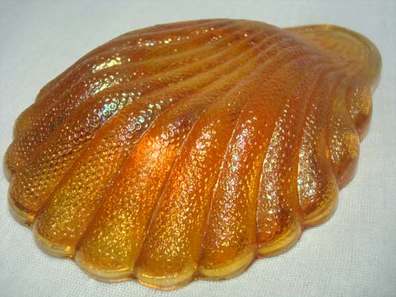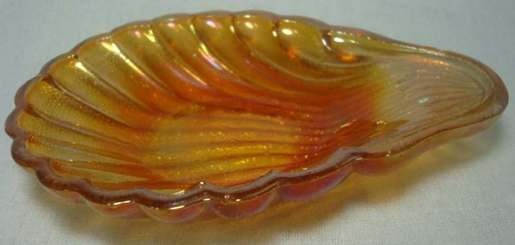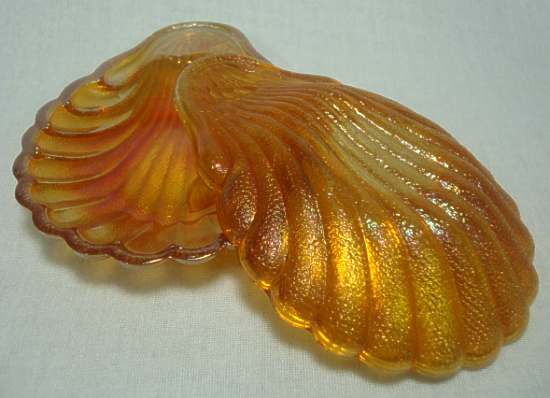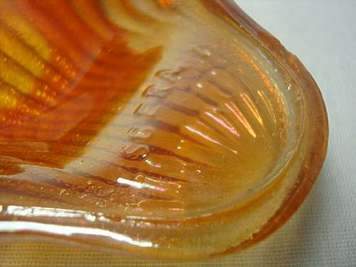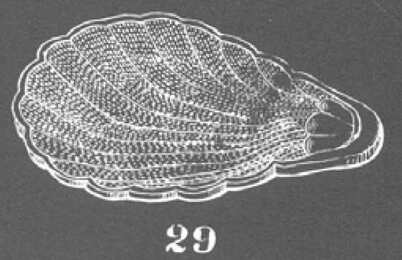Collectors Facts: Cabrália, Esberard, Brazil
|
Shapes:
Shell
|
Colours:
Marigold. Also non-iridised colours including clear, pale pink and milk glass.
|
Shell shapes, to be used as pickle dishes or for bonbons, trinkets and so on, were produced by many glass factories from the late 1800s right up to today. Several are known in Carnival Glass, including Westmoreland’s “Shell”, Brockwitz “Leaf” (see our Collectors Facts) and more recently, Jeanette’s shell dish.
But the shells featured here are a little different, as they come from Brazil – and to prove it, these are marked with the moulded name of their maker; ESBERARD RIO. They are 5 inches long, by 4 inches wide (13 cm long, by 10 cm wide) and were given the delightful name Cabrália, by writer and glass researcher, Claudio Deveikis.
|
Interestingly, a very similar shell was made by the glassmaker, Marinha Grande in Portugal, as illustrated in their 1901 catalogue and shown on the right.
And what makes that even more intriguing is that, unlike most other shells from all the other glass makers, the Marinha Grande shell has a moulded, textured pattern that seems to be exactly like the Esberard version. There are minor differences between the two, but the distinctive textured pattern seen on the 1901 Marinha Grande shell is virtually identical to the textured pattern on the trade-marked Esberard piece, which infers a very strong link and inspiration between the two. In fact, Brazil and Portugal have a long and very important relationship (going back to the 1500s), as well as being bound by a common language. It seems that the two countries also shared links between their glass makers too. Furthermore, the evidence that Marinha Grande made some Carnival Glass is strong – so, is it possible that there were influences between the two factories in this respect too? Interestingly, another pattern in the 1901 Marinha Grande catalogue has a “look” of a known Esberard pattern called Iraci, as well. |
A final note to this story that also brings us back to Portugal, is the delightful name of this piece, that was given by Claudio Deveikis.
He writes on his blog: “I decided to baptize these shells "Cabrália," in honor of Santa Cruz Cabrália, a city near Porto Seguro, Bahia, where in 1500 the Portuguese Pedro Alvares Cabral first landed in Brazil."
See more Collectors Facts
